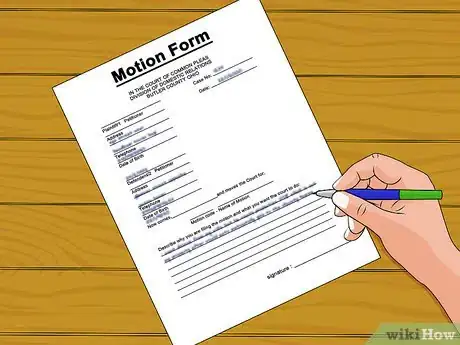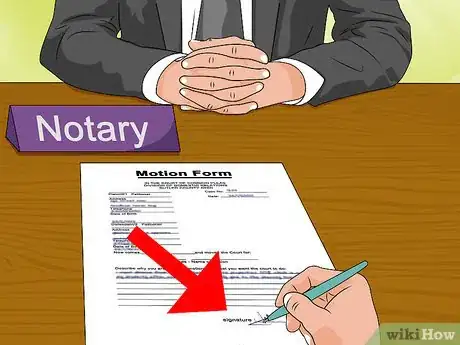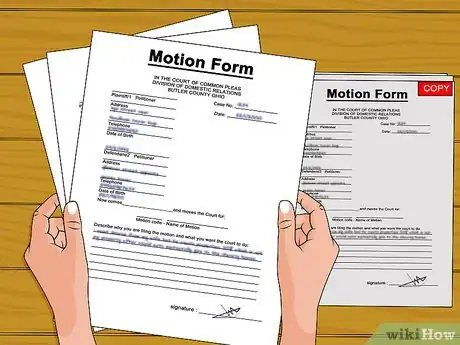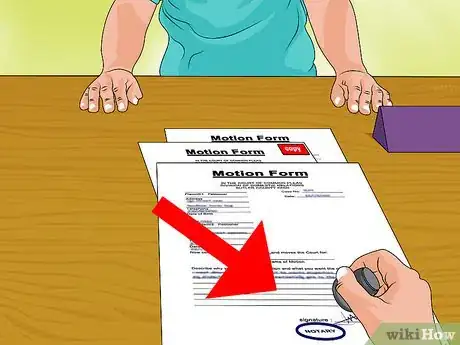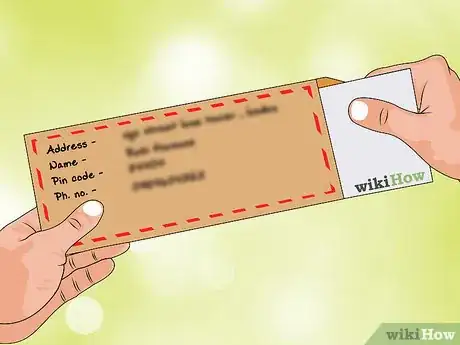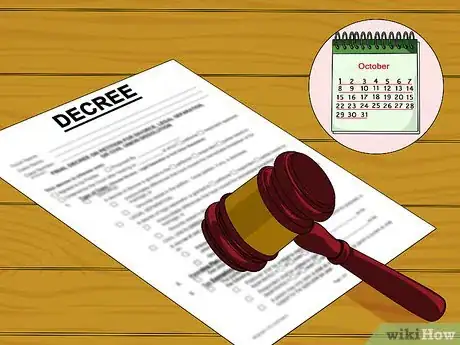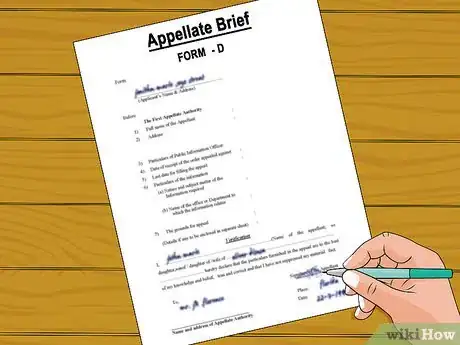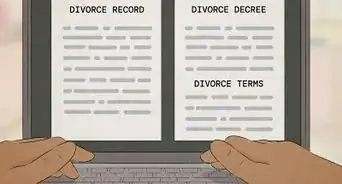This article was written by Jennifer Mueller, JD. Jennifer Mueller is an in-house legal expert at wikiHow. Jennifer reviews, fact-checks, and evaluates wikiHow's legal content to ensure thoroughness and accuracy. She received her JD from Indiana University Maurer School of Law in 2006.
There are 9 references cited in this article, which can be found at the bottom of the page.
wikiHow marks an article as reader-approved once it receives enough positive feedback. In this case, 87% of readers who voted found the article helpful, earning it our reader-approved status.
This article has been viewed 214,825 times.
Although a divorce decree is the final order of a judge, its terms can be changed in two situations. If you think the judge came to the wrong decision regarding any aspect of your divorce, you have the ability to appeal that decision to a higher court, provided you do so within a narrow window of time following the issuance of your divorce decree. On the other hand, if something changes after the decree is finalized that affects certain aspects of the divorce, you may be able to file a motion to modify the decree to accommodate those changed circumstances.
Steps
Filing a Motion to Modify
-
1Find the correct forms. Most courts provide a form for divorce decree modifications. Especially in cases involving children, modifications are common as circumstances change.
- Keep in mind that after the period for appeal has passed, you can't have the division of property modified. However, any ongoing obligations or responsibilities such as child support, spousal support, or child visitation are subject to modification if circumstances change.[1]
- You may have to use a different form depending on whether you want to modify custody and visitation, child support, or spousal support.[2]
- Go to the website of the court where your original divorce case was heard and see if there are modification forms available for you to download. You also might find paper forms at the clerk's office.
-
2Draft your motion. To have a divorce decree modified, you must demonstrate that there has been a significant change in circumstances since the decree was entered.
- For example, if your ex-spouse recently got a promotion and should be paying more child support as a result, you can have the divorce decree modified to account for this change. In some states such as Alabama, court rules establish a rebuttable presumption that child support should be modified if the new amount calculated using the child support guidelines varies more than 10 percent from the original amount.
Advertisement -
3Sign your motion in the presence of a notary. If you're making factual statements in your motion, you should sign it in front of a notary public.
- If you don't know where to find a notary, check and see if your bank provides free notary services to its customers. You also can find notaries at some private businesses such as check-cashing companies, or in the courthouse.
- Nearly every aspect of child or spousal support and visitation can be modified. If you're the one filing the motion for modification, it's up to you to prove that the change is great enough to require the decree be changed to accommodate it.[3]
- For example, suppose your original decree had your kids coming to visit you every other weekend. However, your employer is about to transfer you to a new plant 500 miles away, which would make such frequent travel for such short periods of time unfeasible. In these circumstances, a judge might be willing to enter a modification with a more reasonable visitation schedule.
-
4Assemble your motion and make copies. Once you've signed your motion, assemble it and all attachments and make enough copies to send one to your ex-spouse and keep at least one for your records.
- Include any evidentiary documents as attachments. For example, if you are requesting the amount of child support be modified because you've changed jobs and have a significant change in income, you might attach copies of paycheck stubs.
- You also should attach a copy of the original divorce decree.
- Make sure you have a certificate of service and notice of hearing. These forms usually are available at the same place where you got the forms for your motion.
-
5File your motion. Take your originals and copies to the clerk's office of the court that issued your divorce decree and file your motion to modify.
- The clerk will stamp your originals and copies "filed" with the date after you pay the filing fee, usually around $100.[4]
- The clerk also will schedule a date and time for your hearing and include this on the notice of hearing attached to your motion.
-
6Serve your ex-spouse. After your motion has been filed, you must send copies to your spouse to provide notice of your request for modification and the hearing scheduled.
- You can contact the sheriff's department or a private process serving company to serve the papers in person, or you can mail them certified mail.
-
7Attend mediation or pre-trial conferences as required. A motion to modify can become as lengthy and formal as a divorce trial itself. For this reason, many jurisdictions require you to complete mediation or attend a pre-trial conference before the motion is heard by a judge.
-
8Appear in court for your hearing. If your ex-spouse continues to contest your request for modification, or you are otherwise unable to reach an agreement, a judge will hear your motion and make a final decision on whether to modify the decree.
- Arrive at the courthouse early so you have plenty of time to park and go through security. Dress conservatively and professionally, and bring copies of all the documents you've filed along with any witnesses or evidence you wish to present.
- In court, rise when your name is called and speak only to the judge. Since you filed the motion, you will have the opportunity to speak first.
- After you've presented the reasons you believe the decree should be modified, the judge will give your ex-spouse the opportunity to present her side. Do not speak to her directly or interrupt her; speak only to the judge.
- After hearing both sides and any witnesses, the judge will issue her final ruling on your motion. You may receive the final order that day, or it may be mailed to you later.
Filing an Appeal
-
1Determine whether you qualify to appeal. You have a brief period of time, usually 30 days,[5] after your decree is entered to appeal some portion of the judge's decision.
- Either spouse can appeal a trial court's decision to an appeals court.
- An appeal turns on what happened during the trial, not what has happened since the trial. You can't introduce new facts or evidence on appeal – you're only arguing that the trial judge's decision was incorrect based on the information he had at the time.[6]
- Keep in mind that settlement agreements typically can't be appealed, because you both agreed to the terms. You may be able to modify the agreement if circumstances have changed.[7]
-
2Consider hiring an attorney. Even if you didn't have an attorney represent you at trial, appellate practice is considerably more complicated than trial practice, and divorce decisions are rarely overturned on appeal.[8]
- If you did have an attorney, she may be willing to continue to represent you, or she may refer you to another attorney who specializes in appeals.
- Appeals arguments typically focus on issues of legal interpretation rather than factual disputes. Appellate judges generally won't second guess a trial judge's factual conclusions.[9]
- An attorney will ensure that you have solid grounds for appeal and that all necessary documents are filed ahead of any deadlines.[10]
-
3Draft your appellate brief. The appellate brief contains your legal argument as to why the trial court judge's decision was wrong and should be overruled.
- Unlike your initial divorce petition, you likely won't find forms to fill out for an appellate brief. You may be able to find briefs filed in other cases in the same court to use as guides.
- Typically an appellate brief argues the judge made a mistake either in applying or interpreting the law – not that the judge made a mistake of fact. For example, if the court concluded that your total income was $100,000 a year, you can't appeal that factual conclusion. However, if the judge arrived at that conclusion because he included money that legally should have been excluded from your legal income for the purposes of calculating child or spousal support, that would be an issue for appeal.[11]
-
4File your appellate brief. When you file your brief, you must also follow your appellate court's rules for "perfecting" your appeal. These vary not only among states but also among appellate courts within a state.[12]
- In addition to paying a filing fee, you typically will have to file a notice of appeal and order a trial transcript along with a written order asking the trial court clerk to send the trial court record to the court of appeals.[13]
-
5Attend the appellate court hearing. After the appellate court receives all the documents for your case, it may hold oral arguments on either party's request. No testimony or evidence is presented; rather, appellate attorneys argue their cases based on the record of the case at trial.
- Once arguments are heard, the appeals court, typically consisting of a three-judge panel, will decide whether to accept or deny your appeal.
- In most cases, unless your judge made a serious error, the appellate court will uphold the original decree and you will have to follow it.[14]
Warnings
- While it's fairly common to request a modification to custody, child support, or spousal support agreements, courts are reluctant to change the terms of property division agreements. In some states, such changes are prohibited. In states where it's allowed, the modification typically must be requested within 30 days of the entry of the divorce decree.[17] [18]⧼thumbs_response⧽
- If you decide to file an appeal, keep in mind that the process can take several years, especially if the appellate court sends your case back to the trial court with instructions to consider certain issues again. You should give serious thought to how your life will be impacted by having your divorce up in the air for that length of time.[19]⧼thumbs_response⧽
- If you file a motion for modification within six months of the date your decree is finalized, the judge will look at it with suspicion. Because a substantial change of circumstances is required, it is unlikely that things would change so significantly in such a brief period of time as to justify modification. Some states even require a higher burden of proof if you file a motion for modification within the first year of your divorce.[20]⧼thumbs_response⧽
References
- ↑ https://www.avvo.com/legal-guides/ugc/an-overview-of-divorce-decree-modification
- ↑ https://www.courts.state.co.us/Forms/renderForm1.cfm?Form=770
- ↑ http://www.dummies.com/how-to/content/making-changes-to-your-divorce-agreement.html
- ↑ https://www.courts.state.co.us/Forms/renderForm1.cfm?Form=770
- ↑ https://www.avvo.com/legal-guides/ugc/an-overview-of-divorce-decree-modification
- ↑ http://family.findlaw.com/divorce/appeals-and-motions-to-modify-the-divorce-judgment.html
- ↑ http://family.findlaw.com/divorce/appeals-and-motions-to-modify-the-divorce-judgment.html
- ↑ http://family.findlaw.com/divorce/appeals-and-motions-to-modify-the-divorce-judgment.html
- ↑ http://www.divorcesupport.com/divorce/Appealing-a-Divorce-Judgment-or-Decree-170.html
- ↑ http://www.legalmatch.com/law-library/article/appealing-a-divorce-decree.html
- ↑ http://www.legalmatch.com/law-library/article/appealing-a-divorce-decree.html
- ↑ https://www.ohiobar.org/ForPublic/Resources/LawYouCanUse/Pages/LawYouCanUse-643.aspx
- ↑ https://www.ohiobar.org/ForPublic/Resources/LawYouCanUse/Pages/LawYouCanUse-643.aspx
- ↑ https://www.avvo.com/legal-guides/ugc/appealing-divorce-decree
- ↑ https://www.ohiobar.org/ForPublic/Resources/LawYouCanUse/Pages/LawYouCanUse-643.aspx
- ↑ http://www.dummies.com/how-to/content/making-changes-to-your-divorce-agreement.html
- ↑ http://www.dummies.com/how-to/content/making-changes-to-your-divorce-agreement.html
- ↑ https://www.avvo.com/legal-guides/ugc/an-overview-of-divorce-decree-modification
- ↑ http://www.legalmatch.com/law-library/article/appealing-a-divorce-decree.html
- ↑ http://cordellcordell.com/practice-areas/modification-of-decrees/
About This Article
While a divorce decree is the final order of a judge, it can be amended if certain circumstances have changed. While you can’t modify the division of property after the appeal period has passed, you can appeal ongoing responsibilities, like child support or visitation. Go to the website of the court where your original divorce case was heard to download modification forms. You can also find this paperwork at the clerk’s office. To modify your decree, show that there has been a change in circumstances. For example, if your ex got a raise, you can ask for more child support. Once you fill out your motion, take it to the clerk’s office, pay a filing fee, and schedule your hearing. To learn how to prepare for your court hearing, keep reading.

